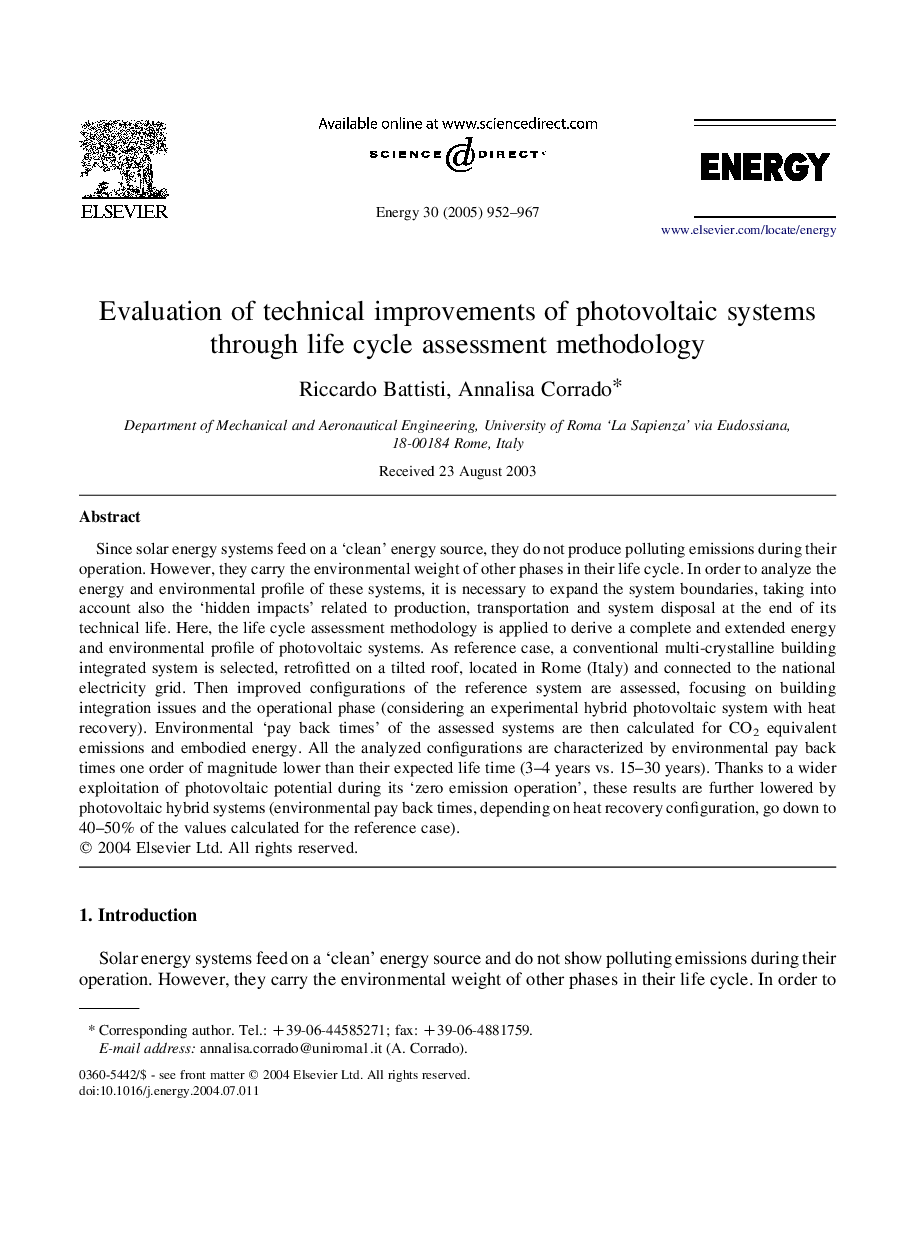| Article ID | Journal | Published Year | Pages | File Type |
|---|---|---|---|---|
| 10682898 | Energy | 2005 | 16 Pages |
Abstract
Since solar energy systems feed on a 'clean' energy source, they do not produce polluting emissions during their operation. However, they carry the environmental weight of other phases in their life cycle. In order to analyze the energy and environmental profile of these systems, it is necessary to expand the system boundaries, taking into account also the 'hidden impacts' related to production, transportation and system disposal at the end of its technical life. Here, the life cycle assessment methodology is applied to derive a complete and extended energy and environmental profile of photovoltaic systems. As reference case, a conventional multi-crystalline building integrated system is selected, retrofitted on a tilted roof, located in Rome (Italy) and connected to the national electricity grid. Then improved configurations of the reference system are assessed, focusing on building integration issues and the operational phase (considering an experimental hybrid photovoltaic system with heat recovery). Environmental 'pay back times' of the assessed systems are then calculated for CO2 equivalent emissions and embodied energy. All the analyzed configurations are characterized by environmental pay back times one order of magnitude lower than their expected life time (3-4 years vs. 15-30 years). Thanks to a wider exploitation of photovoltaic potential during its 'zero emission operation', these results are further lowered by photovoltaic hybrid systems (environmental pay back times, depending on heat recovery configuration, go down to 40-50% of the values calculated for the reference case).
Related Topics
Physical Sciences and Engineering
Energy
Energy (General)
Authors
Riccardo Battisti, Annalisa Corrado,
